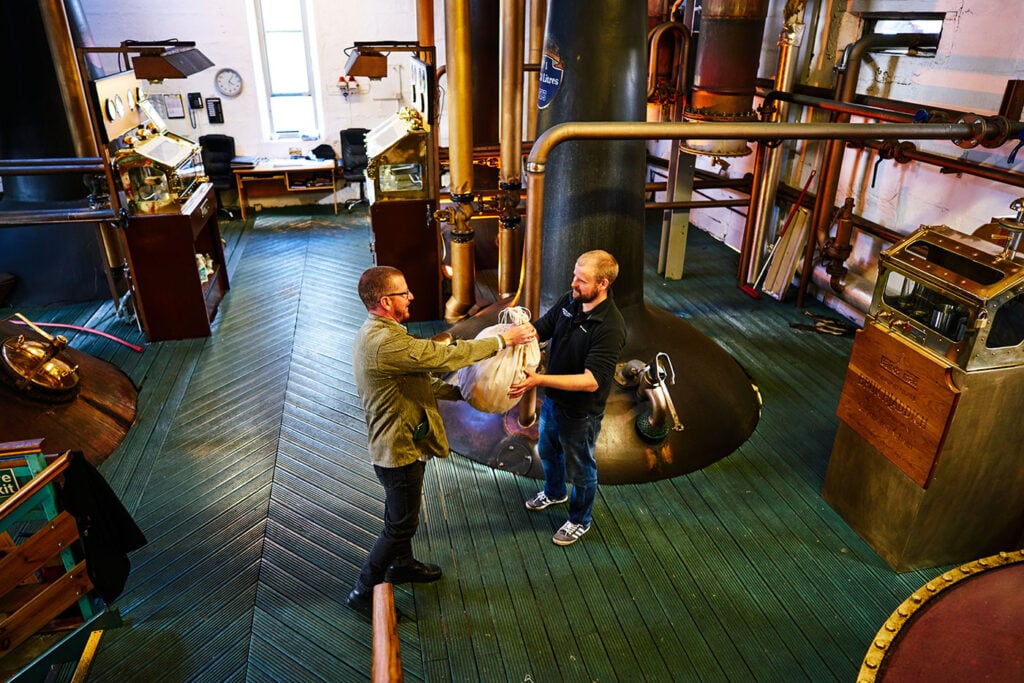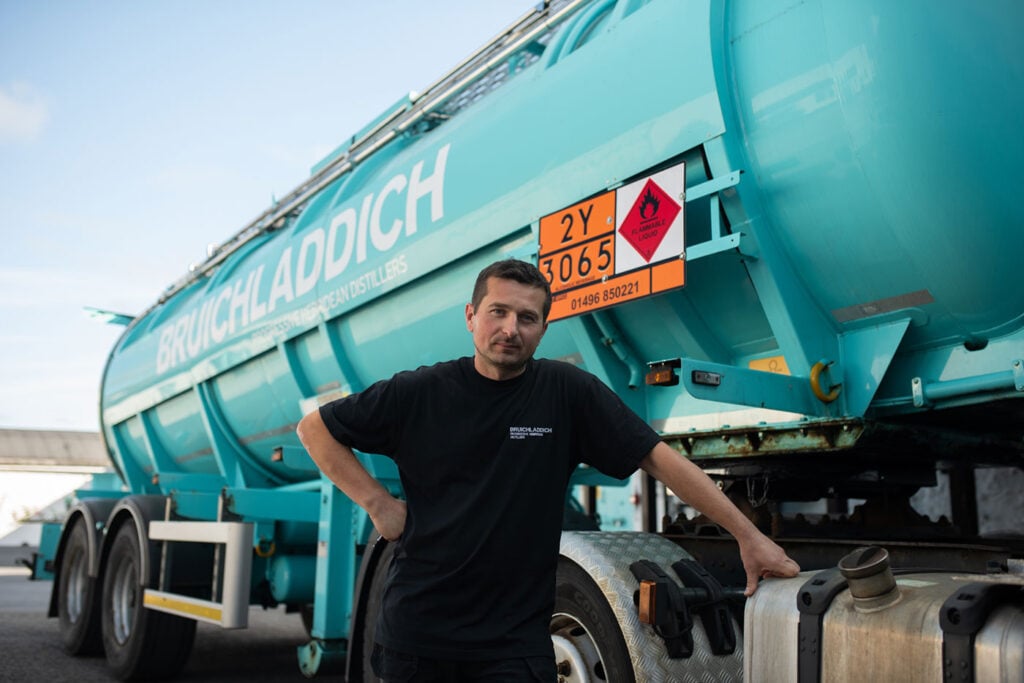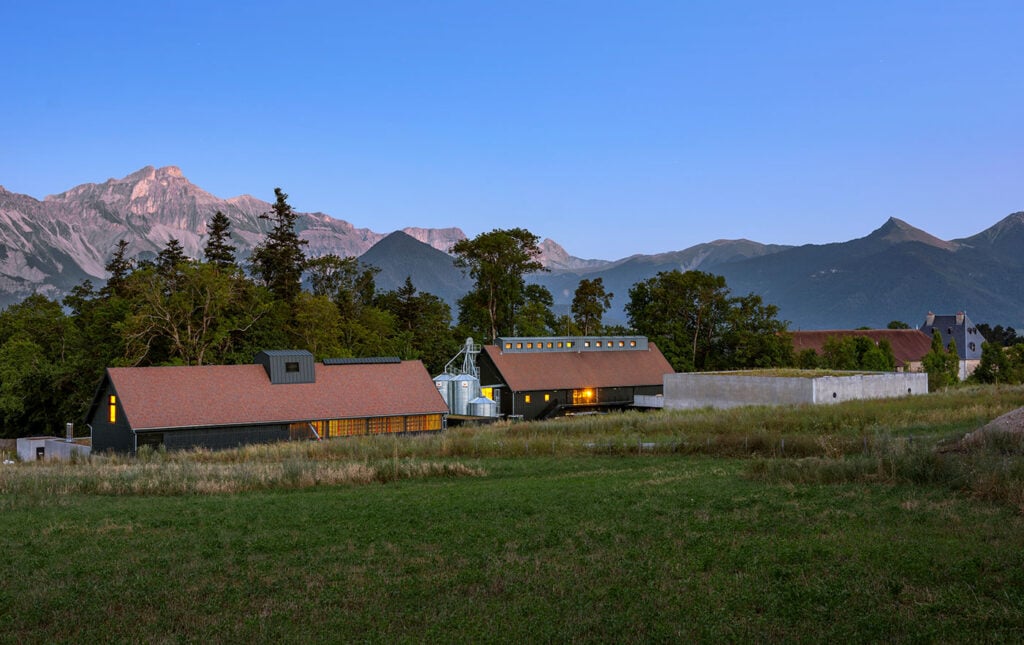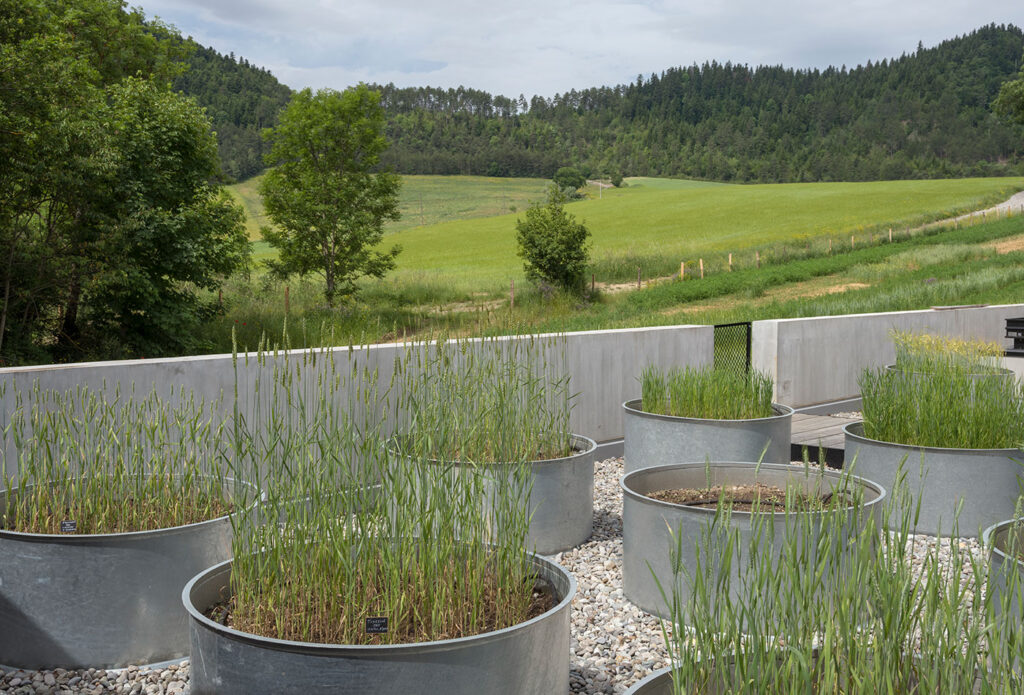In whisky, provenance is one of those terms that gets tossed around so often that it risks losing meaning.
It can seem like just a posh word for “where a whisky comes from.” But producers who take the provenance of their whisky seriously explain it more as a chain of identity and origin. An approach that gives the spirit personality and credibility. Where it was born, who raised it, and how it got here. The dram’s passport. Proof of a story that can’t be faked.
I recently spoke with two people who really live and breathe that philosophy. One is Adam Hannett, head distiller at Bruichladdich on Islay. The other is Frédéric Revol, founder of Domaine des Hautes Glaces in the French Alps. Two distilleries, two very different landscapes. Both bound by the belief that whisky’s future depends on knowing exactly where it comes from.

Bruichladdich Distillery is a pioneer in modern whisky production
Bruichladdich: Provenance on Islay
The Bruichladdich distillery was founded in 1881, nearly collapsed in the 1990s, and was revived in 2001 with the idea that transparency and terroir should be central to Scotch whisky. At the time, this was radical. The distillery has been banging the provenance drum ever since.
Whether it’s bottling whiskies made from barley grown in specific fields, or championing Islay-grown crops in a place where barley had historically been imported, Bruichladdich has always pushed back against the industry’s fondness for vague backstories.
Adam Hannett, who started at the distillery as a warehouseman in 2004 and became head distiller in 2015, is blunt about it: provenance matters because people deserve to know what they’re drinking. “We make whisky from specific fields, from specific farms, and that’s what ends up in your bottle. If we say it’s Islay barley, it’s not a concept or a marketing term – it’s barley grown in Islay soil by farmers we know personally. You can trace it.”

Say hello to Bruichladdich master distiller Adam Hannett
Field over yield
For Bruichladdich, provenance isn’t just geographical. It’s social, too. The distillery employs local farmers, supports local industry, and shares the benefits of its success. In an industry often dominated by global giants, Bruichladdich shows that provenance also means accountability to your own community.
Hannett feels it’s a race to the bottom to make whisky by yield. That nobody noses a whisky and looks for efficiency. “For me, provenance is everything,” he says. “Islay is the beating heart of Bruichladdich Distillery, our island and the community are at the forefront of every decision we make. When it comes to whisky making, all of our single malt whiskies are Islay-centric”.
Bruichladdich grows over 50% of its alting barley on the island, and every drop of whisky is conceived, distilled and matured there, as well as bottled on site using Islay spring water. Each cask is exposed to wild Atlantic storms, salt spray, and mineral-rich air. “The natural elements of Islay imprint themselves on the spirit, giving our whiskies a distinct coastal character and flavour that couldn’t come from anywhere else,” Hannett says. “Beyond flavour alone, every single malt whisky we make evokes a real, authentic sense of place which celebrates our island home – and that’s really special”.

Bruichladdich doesn’t make whisky production easy for itself. But people respond to its integrity.
The challenges of provenance
This process is not without its challenges. When the distillery reopened in 2001, the founders – who had a background in fine wine – were determined to reconnect land and whisky in pursuit of flavour. That meant starting with a progressive barley-growing policy that has continued to this day. But growing barley on Islay was unheard of at the time.
“To meet the required ‘malting quality’, the barley would need to meet strict standards. Failing to do so, the crop would instead need to be sold as cattle feed, offering a much lower price,” Hannett explains. “Alongside the risks of the unpredictable west coast weather – being particularly windy and wet – the logistics of shipping crop off the island, and investing in specialised equipment, the costs of growing a malting crop appeared unviable on the traditional market. But in pursuit of grain grown on Islay soil, we approached local farmer Raymond Stewart in 2004 to consider growing malting barley. A tough ask, since no one on Islay was doing so at the time, it was a leap of faith on both sides – but it worked”.
Worth the commitment
Bruichladdich now works with 20 local farmers on the island today, but it’s definitely not been easy. “Our farming partners have lost large parts of crops and had some low yields, battling crop-eating geese and deer, and severe weather. But there’s stoicism and a real island perseverance among our agricultural community,” Hannett says.
He outlines a comradeship between the farmers and the workers at Bruichladdich, telling a story of collaboration to overcome challenges, support each other and share knowledge. “We’ve now been growing on Islay for over two decades, but still take each year as it comes – and each successful harvest is a triumph against the odds. Using locally grown Islay barley, we’re proud to create special and meaningful whisky in connection with the local farming community. One with true provenance, incredible flavour, and character that could only be from the island”.

Say bonjour to Frédéric Revol, seen here out in the fields
Hautes Glaces: Provenance in the Alps
If Islay is whisky’s wild Atlantic outpost, the French Alps are its mountain frontier. Domaine des Hautes Glaces, founded in 2009 by Frédéric Revol, produces organic single-farm, field-to-bottle whisky in the Trièves valley. Revol is an agronomist by training, which explains why the distillery doesn’t just talk provenance, it treats it like a science.
Here, the farm is the distillery. Cereals are grown, harvested, and malted on site. Each plot is vinified and distilled separately to preserve the individuality of the land. Even the stills were custom-designed to reflect the estate’s vision of terroir-driven whisky.
As Revol puts it: “Whisky is an agricultural product. It begins in the soil, in the way you farm, and in the climate of the valley. If you lose that, you lose whisky’s truth. Provenance for us is not about inventing tradition, it is about being radically transparent with where and how we produce.”

The distillery is defined by its approach to whisky provenance
Radical transparency and a holistic view
It is this connection to the land that shapes the Hautes Glaces whisky. The grain and its environment are central to the brand’s production choices and processes, which place them at the heart of the whisky’s subsequent flavour.
“Simply put, we create whiskies that are imbued with the taste and vibrancy of the place in which they are created – an incredibly inspiring mountain region,” Revol explains. “Hautes Glaces is therefore naturally committed to cultivating all grains (barley, rye, spelt, einkorn, oat,…) coming from the high alpine plateau where the distillery sits, through 15 local organic farms, all located 15 km around the distillery”.
He summarises our subject neatly. “Ultimately, provenance in whisky should mean radical transparency and a holistic view that recognises all elements, from the raw materials and their origins to the production methods, to contribute to the final flavour and identity of the whisky”.

Ever tried Domaine des Hautes Glaces Indigene Organic Whisky? It’s spectacular.
Dealing with a changing climate
When dealing so directly with the environment, naturally, climate change presents a unique challenge. Revol says Hautes Glaces whisky is based on four elements – grain, water, yeast and energy – and that he wants their spirits to transport them to the centre of a vast landscape and to the very heart of the environmental and social challenges we must face.
It’s the end-to-end control of the supply chain that allows Hautes Glaces to put its commitments into action at every stage of production:
– Self-produced seeds: To test and experiment with old grain varieties and measure how they adapt in the mountain climate and to the consequences of climate change (drought, disease, pests, etc.)
– Local cereals: From organic, regenerative and collective farming, to build up common agro-ecological knowledge and regenerative practices to prevent diseases and promote fertility
– Responsible water management: Water is a precious resource, and we recycle approximately. 70% of the water resulting from the production process to used in the fields. The equivalent of a substantial rainfall and proves especially beneficial during drought periods.
– Renewable, local and circular energy: Most of the energy consumed by Hautes Glaces comes from local & sustainable energy (wood). This energy is reused to power the various stages of the process or to heat the office.
– Eco-designed bottles: Draff for the bottle stopper + bottle compact volume + wild glass made of 96% recycled glass paste, all this limits Hautes Glaces’ environmental footprint.
The world’s first whisky distillery to be Regenerative Organic Certified
Hautes Glaces whisky has also joined the Regenerative Organic Alliance (ROA). In doing so, it became the world’s first whisky distillery to be Regenerative Organic Certified (ROC).
Revol says this new standard aims to stop industrial agriculture and provide a solution to the current climate crisis. “It is the highest standard in organic and sustainable agriculture, ensuring soil health rehabilitation, animal welfare, fairtrade: improving the lives of soil microorganisms as well as workers and communities”.

The grain nursery at Domaine des Hautes Glaces demonstrates its commitment
Connection, reality, place
Talk to Hannett and Revol, and it underlines that provenance isn’t one-size-fits-all. On Islay, it’s about connecting whisky back to the island, its soil, its farmers, and its people. In the French Alps, it’s about defining whisky as an agricultural expression, as traceable and terroir-driven as fine wine.
When brands talk about provenance, they’re often trying to bottle authenticity. Sometimes it’s genuine. Sometimes it’s theatre. Provenance doesn’t make a whisky better by default. But that pursuit of integrity gives those of us who want to explain why whisky is more than liquid in a glass a story to tell. One that runs deeper than any slogan dreamt up in a marketing meeting. A spirit born of earth, air, grain, and weather — made by people who live with the consequences of their choices.
Provenance isn’t a badge; it’s a relationship. It’s the link between the drinker and the landscape. And as whisky keeps chasing innovation, provenance might just be what stops it from losing its soul.
